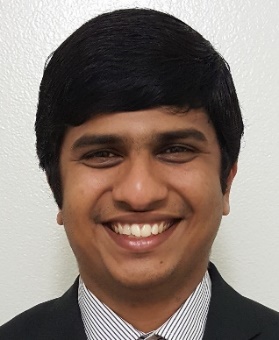Design and Analysis of Programmable Receiver Front-ends Based on LPTV Circuits

Abstract: Wide programmability is increasingly desirable in transceiver designs. Due to the proliferation of frequency bands that need to be supported in wireless standards, such as LTE, WiFi, etc., the continued reliance on bulky off-chip SAW/BAW filters and on-chip inductors in current receiver designs is increasingly untenable. Hence, more integrated approaches are necessary, especially for future radio concepts, such as cognitive radios (CRs), where the channel bandwidth and center frequency are dynamic and not known a-priori. Current state-of-the-art on-chip receiver designs rely on techniques such as discrete-time analog signal processing, N-path filtering, and the mixer-first receiver topology. Nevertheless, on-chip filtering still does not approach the selectivity or linearity of their off-chip counterparts. Hence, new approaches are necessary.
This talk highlights a programmable receiver front-end that utilizes the recently developed concept of Filtering-by-Aliasing (FA). By utilizing a linear, periodically time-varying (LPTV) circuit with a sampled output, sharp baseband filtering is achieved that can be upconverted to any desired LO frequency using an integrated passive mixer. Further, to achieve impedance matching with the antenna, an S11 constraint is added to the design of the FA filters, while time-interleaving is applied to further increase filter sharpness. Measurements on a fabricated prototype achieved a wide LO tuning-range of 0.1-1GHz, wide filter bandwidth (BW) tunability, a filter stop-band suppression of 70dB with a transition band only 4×BW, high close-in blocker tolerance with >21dBm IIP3 at only 1.2×BW offset frequency, and a wideband S11 better than -9dB throughout the LO range. Further, an analysis technique for general LPTV is developed utilizing the concept of conversion matrices. By deriving conversion matrix-based frequency-domain equivalent circuits, LPTV circuits can be analyzed just like LTI circuits. Circuit laws, such as KVL and KCL can be easily applied to derive frequency responses. Example application to mixer-first receivers and N-path filters is highlighted to showcase the utility of the analysis technique.
Biography: Sameed Hameed received his Bachelor’s from the Indian Institute of Technology Madras in 2011 and the M.S. degree from UCLA in 2013, both in in Electrical Engineering. He is currently working towards his Ph.D. degree at UCLA. He has worked as an RFIC design intern at Broadcom, Irvine, and is currently an RFIC design intern at Silvus Technologies, Los Angeles. He was a recipient of an EE Department Fellowship during Fall 2013, a UCLA Graduate Division Fellowship in 2014, the Broadcom UCLA Fellowship during the 2015-16 academic year, the Dissertation Year Fellowship (DYF) and the MediaTek UCLA Fellowship during the 2016-17 academic year. He was also awarded an IEEE SSCS 2015-2016 Pre-Doctoral Achievement Award. His research interests are in the area of RF transceiver design with an emphasis on signal processing techniques.
For more information, contact Prof. Sudhakar Pamarti (spamarti@ee.ucla.edu)
Date/Time:
Date(s) - May 08, 2017
2:30 pm - 4:30 pm
Location:
E-IV Maxwell Room #57-124
420 Westwood Plaza - 5th Flr. , Los Angeles CA 90095
